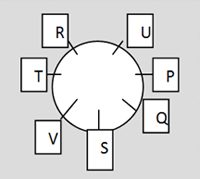| Persons | Profession | Berth |
| A | Engineer | Lower Berth |
| B | Pathologist | Upper Berth |
| C | Pharmacist | Middle Berth |
| D | Architect | Lower Berth |
| E | Journalist | Middle Berth |
| F | Lawyer | Upper Berth |
| G | Doctor | Middle Berth |
| Persons | Profession | Berth |
| A | Engineer | Lower Berth |
| B | Pathologist | Upper Berth |
| C | Pharmacist | Middle Berth |
| D | Architect | Lower Berth |
| E | Journalist | Middle Berth |
| F | Lawyer | Upper Berth |
| G | Doctor | Middle Berth |
| Persons | Profession | Berth |
| A | Engineer | Lower Berth |
| B | Pathologist | Upper Berth |
| C | Pharmacist | Middle Berth |
| D | Architect | Lower Berth |
| E | Journalist | Middle Berth |
| F | Lawyer | Upper Berth |
| G | Doctor | Middle Berth |
| Persons | Profession | Berth |
| A | Engineer | Lower Berth |
| B | Pathologist | Upper Berth |
| C | Pharmacist | Middle Berth |
| D | Architect | Lower Berth |
| E | Journalist | Middle Berth |
| F | Lawyer | Upper Berth |
| G | Doctor | Middle Berth |



